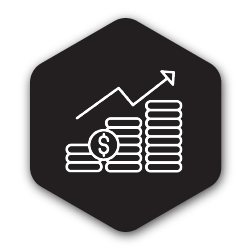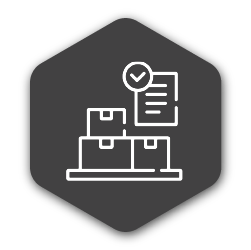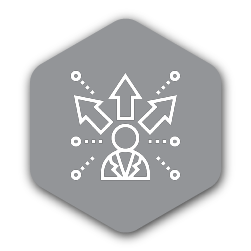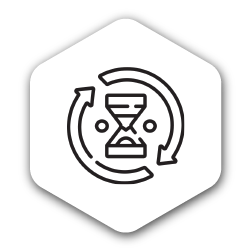Do you work in retail and want to increase your sales and profitability? Are you interested in improving the shopping experience for your customers? Do you want to become more efficient as a business? If you've answered 'yes' to any of these questions, data-driven assortment planning is a solution. They are not the only reasons why it matters.
There are plenty more, a few of which we'll unpack in this article. Suffice it to say, that if your goal is to strike a balance between efficiency and customer satisfaction, you don’t need to look any further.

1. It improves your overall sales performance
The first reason is one that we have already mentioned. Assortment planning can help you improve your overall sales performance.
Of course, it's one thing to say that assortment planning can help you and another to explain and show that in action.
Let's start with why it helps.
The assortment planning process involves selecting the products that you will offer in particular areas and during specific periods.
These are the items your customers want to buy rather than what you think they want to buy.
You achieve that by identifying your top-performing (and worst-performing) products based on sales and units. What items do your customers buy frequently? What products do they not buy frequently or even ignore?
With this information, you can then build out a product assortment that will match the needs of your particular customer segments. Doing so also reduces your risk of holding "dog" items. We'll unpack this further in a point below. In short, dog items are those products that don't sell, taking up shelf space and increasing the possibility of holding aged inventory.
Here’s an example to better understand what we mean.
Let's say you're a general merchandise retailer and you stock a Wine category. This category includes an extensive range due to various blends and other wines requested by your customers. At face value, you believe you are catering to anyone interested in buying wine from your store.
However, after completing the assortment planning process, it becomes apparent that your wine range is too extensive, and it hurts your monthly sales. To turn it around, you can first look at your data to see which items sell the most. Then, provide these items with more shelf space while reducing the space given to poor-performing products.
By providing more shelf space for those items that sell more, you set your store up to increase its sales. Meanwhile, you're also improving customer satisfaction because shoppers can find what they want to buy.

2. It helps you to combat rising inventory levels
If you provide the right products at the right time at the right price, an increase in sales follows. We've already touched on that above. A result of increased sales is it can also help you combat the issue of rising inventory levels.
Let us explain.
As we mentioned earlier, assortment planning helps you optimize your product range. You can ensure that the products in your store are those that your customers want to buy. As a result, you provide shelf space to the products that deserve it based on their sales. Meanwhile, you reduce space given to the items that don’t sell.
Since you reduce the shelf space for those items that don't sell, you also remove the possibility of having aged stock on the shelf. Once you clear out any of these items from your store, you can reduce your stock levels and ensure better inventory control.
Better inventory control leads to many benefits, including increased sales and profitability
Now imagine not optimizing your product range using data. Not only would you have stock on your shelf that doesn't sell. That's stock on the shelf in-store and in your stockroom. You also reduce your sales because you have less space to give to those items that do sell.
By removing redundant products from your range, you can focus your efforts on the following:
- Products that either sell high units (traffic building);
- High margin (profit-generating); or
- Must-have products (products with low levels of transferable demand).
Meanwhile, you should have no concerns about products sitting on the shelf and gathering dust. So long as the rate at which new stock comes in is in line with your sell-out rate, your levels will remain stable. Monitoring your data is one way of ensuring that happens because if anything changes, you can react accordingly.

3. It helps you to identify opportunity gaps
At this point, we have established that the assortment planning process helps you determine which items to stock for increased sales and better inventory control. But it doesn't stop there.
Data-driven assortment planning can also help you identify opportunity gaps. How?
First, it's worth pointing out that it's one of the four elements that make up the methodology that DotActiv uses when setting up an assortment plan. This methodology is the foundation on which we build everything else.
Using external market and POS data, we ensure that your assortment strategies aim to replace slow-moving and high-transferable products with high-performing products.
Let's say you stock Cookware, be that as a category or a line of products. After looking at the sales data, you find that a particular brand is underperforming. Meanwhile, another is performing far better than expected. In this instance, you'd want to cut the underperforming brand and increase the minimum order quantities of one that sells well.
It's an opportunity to either add more products from that range or expand on the types of brands that you have available for sale. Please note here that you must justify why you added the specific products. The last thing you want is to expand your range because you can. That could lead to a bloated range and could even be a struggle to get rid of any stock because what you add is not selling.
Again, it's critical to look at your sales data. Doing so also allows you to choose the right products when expanding your range. That can help you increase your sales since you're enticing shoppers to buy more in-store.
 4. It helps you to improve your buying consistency
4. It helps you to improve your buying consistency
If we consider the goal of assortment planning - offering the right products at the right place during the right time - it's plain to understand where this last reason plays a role.
By being consistent in your merchandise planning and buying, you can ensure that you always stock the right products according to what sells. That also allows you not to overstock your range or order too many items.
By minimizing your range, you remove the admin of maintaining a large number of products and brands simultaneously. With a core range, it's simpler to re-order items whenever you need to do that. That allows you to be consistent. Of course, it's more than that.
It's to ensure you always stock those items that sell. You can stock a variety of items across a category. In such instances, you must at least consult your data so that you don't purchase too many items that fail to sell.
For example, you could order larger quantities of Product A and B because they are your top three sellers in Category X. And then for Product C, you'd still stock it, but only a limited quantity. That way, you cater to all demands, including anyone who might have a penchant for Product C.
However, you don't hurt your bottom line because you have provided all products with the shelf space they deserve according to their sales figures.
Conclusion
Completing a data-driven assortment plan should not be viewed as a nice-to-have. That’s especially true if you’re looking to improve your retail business. Here's why. Not only does it help you improve your sales, but it can also lead to better control of your inventory in-store. More importantly, you can identify opportunity gaps and improve your buying consistency.
Any of these reasons is enough to argue for a data-driven assortment plan. When you consider they are byproducts of a data-driven assortment plan, it makes it even more critical that you recognize their importance.
Need help developing an assortment plan that'll drive sales and improve your retail business? You can book a software demo with a DotActiv expert here or browse our software and service offerings here.


